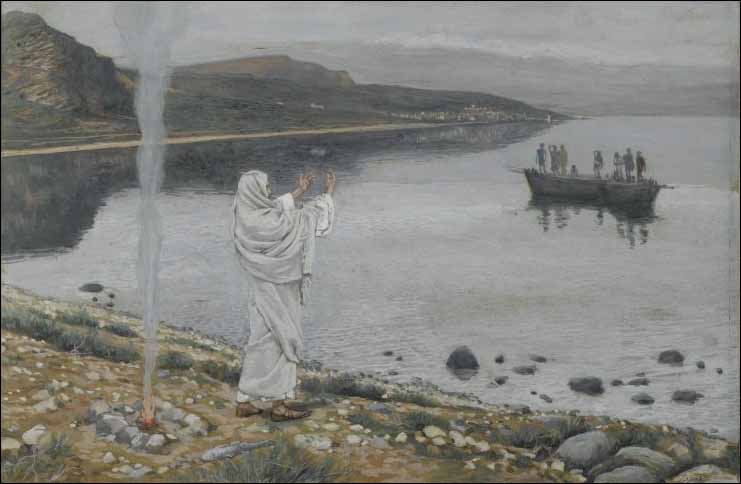
Catherine of Siena: one of those remarkable women--and there have been quite a few of them!--who have commanded respect since their lifetime, and increasingly so over the centuries. St. Catherine is counted among the official Doctors (or Teachers) of the Church. Her written works--her deeply mystical Dialogue and her over-400 Letters to a wide range of people--still find many admiring readers today. (The image shows Catherine dictating her Dialogue to a monk, under divine inspiration.)
She was born in Siena, Italy, in 1347 on the Feast of the Annunciation, one of a large family of 25 children born to a dyer and his wife. At the age of six, Catherine had a mystical experience that changed her life: she saw Christ in glory with Saints Peter, Paul and John. In her vision, Jesus smiled at her and stretched out his hand to bless her. From then on, Catherine considered herself his. Her parents wanted her to marry, and pressured her considerably to do so, but she refused, eventually cutting off her beautiful long hair to discourage their efforts. God, she later said, encouraged her to build a little cell or refuge in her heart where nothing could disturb her. In another vision, she saw herself as in a mystical marriage to Christ. She became a Dominican Tertiary (a Third Order member), living at home and, despite ill health, doing housework for the family—-but also, increasingly, conversing with, and guiding by her wise advice, an ever-expanding circle of friends. She nursed those sick of the plague, and did many other good works.
Since she was widely respected, she also became drawn into important issues of the Church at the time. Among her letters are those to Pope Gregory XI, then in Avignon: she urged him to bring the Papacy back from Avignon (where it had been largely under the control of the French) to Rome. Her letters to the Pope make for very interesting reading--they are quite blunt and forceful, but she often addresses him as “"Babbo" (Daddy); she then went to Avignon and met with the Pope in person, in part trying to make peace in Italy. (He returned to Rome.)
She died in 1380, at the age of 33, offering herself for the Church, which was by that time suffering from a new affliction--the Great Schism.
Catherine was clearly a remarkable person--a powerful and also a charming woman, and a great saint. She is patron to many places and groups, among them firefighters (she once fell into the fire while in ecstasy but was not burned); the sick and nurses (for her own ill health and her work with plague-victims), and temptations of all kind (she suffered greatly from them herself).
So, you may be waiting: What shall we eat in St. Catherine's honor? I was casting about for Italian treats--I am sure the Sienese must have something scrumptious for her feast day! But Catherine herself spent important periods of her life fasting, and indeed consuming nothing but the Eucharistic host. As she said in one of her dialogues, speaking to the Eternal Trinity: "The food of angels, you gave yourself to man in the fire of your love… In our hunger you are a satisfying food, for you are sweetness and in you there is no taste of bitterness, O triune God." I think that, if possible, the most appropriate food for us to eat in St. Catherine’s honor is the Eucharist--the bread of heaven.














